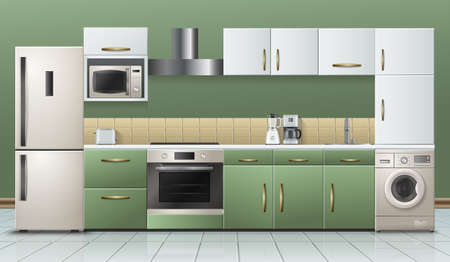Setting the Scene: Defining Luxury in the British Home
In the ever-evolving landscape of UK interior design, luxury is a concept shaped by both tradition and innovation. Unlike fleeting trends, British luxury interiors are grounded in a deep appreciation for quality, heritage, and individuality. Historically, grandeur was signified through stately homes adorned with ornate plasterwork, rich woods, and opulent textiles—echoes of which still inform modern sensibilities. Yet today’s British homeowner seeks more than mere extravagance; luxury is now about comfort, bespoke finishes, and a nuanced approach to colour and material. The local preference leans towards understated elegance—a harmony of contemporary metallic accents with time-honoured materials such as velvet and wool, all curated within sophisticated colour schemes. As we explore the interplay of metallics, rich hues, and tailored palettes in UK homes, it becomes clear that true luxury is not just seen but felt: it is an atmosphere cultivated through thoughtful choices that reflect both personal taste and a storied cultural legacy.
Metallic Accents: Elevating Spaces with Gold, Brass, and Chrome
In recent years, UK interiors have embraced metallic finishes as a means of introducing understated opulence and modern sophistication to homes. While the British design tradition often favours subtlety over excess, metallic accents—when thoughtfully applied—offer a refined way to reflect light, create focal points, and elevate the overall aesthetic without overwhelming a space.
The British Approach to Metallics
Unlike more flamboyant international trends, UK homeowners tend to use metallics as strategic highlights rather than dominant themes. Brass handles on shaker-style cabinetry, chrome fixtures in contemporary bathrooms, and gold-trimmed lighting are popular choices that nod to luxury while maintaining classic British restraint. These touches reference heritage influences yet feel current when paired with today’s colour palettes and furnishings.
Common Applications of Metallic Finishes
| Application Area | Popular Metallic Finish | Effect Achieved |
|---|---|---|
| Kitchen Hardware | Brushed Brass | Warmth and Timeless Elegance |
| Lighting Fixtures | Polished Chrome | Crisp Modernity and Enhanced Light Reflection |
| Accent Furniture | Gold Leaf or Gilded Edges | Luxe Detailing with Subtle Glamour |
| Bathroom Fittings | Satin Nickel or Chrome | Sleek Cleanliness and Minimalist Appeal |
Balancing Metallics for Sophisticated Impact
The key to successful integration lies in moderation. For instance, pairing brass handles with deep navy cabinetry creates an inviting contrast typical of upmarket London flats, while adding a mirrored chrome coffee table can infuse urban apartments with lightness and visual interest. The careful selection of metallic tones ensures compatibility with both period properties and new builds, allowing each home to echo its unique character while embracing modern luxury.

3. Rich Hues: Creating Drama with Colour
Rich, saturated colours have long been synonymous with luxury, lending depth and drama to British interiors. In the UK, where natural light can be fleeting and rooms are often designed for cosiness, the use of deep hues such as emerald green, navy blue, and burgundy brings a sense of opulence and warmth. These shades do more than simply colour a wall—they evoke a mood, set a tone, and create an inviting atmosphere that is both sophisticated and intimate.
Emerald Green: Nature’s Statement Shade
Emerald green continues to gain favour in UK homes for its ability to bridge classic elegance with contemporary flair. Used on feature walls, velvet upholstery, or even cabinetry, this shade offers a lush backdrop that pairs beautifully with metallic accents and natural textures. Its botanical undertones resonate particularly well in traditional Victorian terraces or modern city flats seeking a touch of grandeur.
Navy Blue: Timeless British Sophistication
Navy blue is a staple in British design, celebrated for its versatility and timelessness. It lends a stately feel to panelled drawing rooms or study spaces while remaining adaptable enough for minimalist settings. When contrasted with crisp white cornicing or warm brass fixtures, navy creates an unmistakably British look that’s both polished and welcoming.
Burgundy: Deep Warmth and Heritage Appeal
Burgundy brings an air of heritage to UK interiors, reflecting the rich histories of stately homes and members’ clubs. This hue works particularly well in dining rooms or libraries, enveloping the space in warmth and encouraging conviviality. Pairing burgundy with dark woods or antique gold accessories enhances its luxurious feel while maintaining a connection to Britain’s design traditions.
Layering Rich Colours for Luxury
The true artistry lies in layering these saturated tones thoughtfully throughout the home. Whether used as bold statements or subtle accents—on soft furnishings, artwork, or bespoke joinery—rich hues allow homeowners to craft spaces that exude character without overwhelming the senses. When balanced correctly, they embody the refined drama and understated elegance at the heart of luxurious British living.
4. Sophisticated Colour Schemes: Harmonising Tradition and Modernity
When crafting a luxurious atmosphere in UK homes, the art of balancing bold hues with neutral tones is essential. British interiors are renowned for their ability to weave together classic heritage palettes and cutting-edge contemporary style, creating spaces that feel both timeless and fresh. This harmonious approach allows homeowners to enjoy the comfort of tradition while embracing the excitement of modern design.
The Balance Between Bold and Neutral
Bold colours such as deep emerald greens, royal blues, or rich burgundies inject drama and personality into a space. However, these shades can be overwhelming if used without consideration. UK designers expertly pair these vibrant hues with softer neutrals—think warm greys, taupes, or crisp whites—to create a cohesive look that feels curated rather than chaotic.
Heritage Meets Contemporary
One hallmark of sophisticated colour schemes in British homes is the seamless integration of traditional colours—like oxblood red or navy—with sleek, modern accents. For instance, a Victorian townhouse might feature original mouldings painted in dove grey, offset by contemporary metallic fixtures or statement furniture in bold jewel tones.
Typical Colour Pairings in UK Luxury Interiors
| Traditional Hue | Modern Complement | Effect |
|---|---|---|
| Bottle Green | Matte Gold | Classic elegance with a contemporary twist |
| Navy Blue | Soft Blush Pink | Heritage depth softened by modern warmth |
| Oxblood Red | Creamy White | Dramatic contrast balanced by neutrality |
| Moss Grey | Chrome Accents | Understated base with modern sheen |
Tips for Homeowners and Landlords
If you are refreshing your property’s décor—whether as an owner-occupier or landlord—it pays to consider how colour schemes affect not only aesthetics but also tenant appeal and market value. Neutral foundations remain popular for letting properties due to their broad appeal, but strategic use of accent walls or furnishings in richer shades can set your home apart in a competitive market.
Ultimately, the British approach to sophisticated colour schemes lies in thoughtful juxtaposition: blending the familiar comfort of heritage colours with invigorating modern elements. This careful balance creates interiors that are luxurious, inviting, and unmistakably British.
5. Practical Applications: Tips from UK Interior Experts
Understanding Your Property’s Character
When infusing luxury into UK homes, British interior designers emphasise the importance of respecting the unique character of each property. Whether you’re working with a Victorian terrace in Manchester or a sleek new-build flat in London, begin by assessing existing architectural features. For period properties, designers recommend accentuating original cornices, fireplaces, and mouldings with warm metallic accents—think brushed brass light switches or antique gold frames—which add opulence without clashing with heritage elements.
Integrating Metallics with Subtlety
According to leading UK experts, less is often more when it comes to metallic finishes. In smaller spaces typical of urban flats, opt for statement pieces such as a copper pendant lamp or nickel-plated handles rather than overwhelming the room. To avoid an overly flashy look, balance metallics with tactile materials like velvet cushions or natural wood surfaces, which soften the overall scheme and create depth.
Choosing and Layering Rich Hues
British designers suggest that rich hues—deep blues, emerald greens, and burgundies—work beautifully in both traditional and contemporary homes. For terraced houses with high ceilings and generous light, bold wall colours can create drama and intimacy. In contrast, for compact apartments, use these shades on feature walls or through accessories such as throws and artwork to introduce luxury without making the space feel smaller. Layering different tones within one palette brings cohesion and sophistication.
Sophisticated Colour Schemes: The British Approach
The hallmark of a refined UK interior is a considered colour palette. Designers advocate for combining luxurious tones with classic neutrals like dove grey or warm taupe. This approach grounds vibrant colours and metals while ensuring longevity as trends evolve. Incorporate these combinations through bespoke joinery, curtains, or even painted skirting boards for a cohesive yet tailored effect.
Practical Examples from Leading Designers
A Chelsea-based designer might pair burnished bronze fixtures with inky blue cabinetry in a modern kitchen renovation. Meanwhile, a Birmingham studio could revitalise an Edwardian living room using plush aubergine upholstery set against soft gold wallpaper. Across all property types, experts stress the value of investing in quality over quantity—choosing fewer but finer pieces ensures enduring luxury that resonates with British sensibilities.
6. Sourcing Materials: Where Quality Meets British Design
Achieving a truly luxurious interior, as explored in “Creating Luxury: Metallics, Rich Hues, and Sophisticated Colour Schemes in UK Homes,” hinges not only on your creative vision but also on the quality of materials chosen. In the UK, discerning homeowners and designers place a premium on sourcing paints, finishes, and accessories from reputable suppliers who exemplify British craftsmanship and integrity.
Identifying Trusted UK Suppliers
Begin by seeking out established British brands and independent workshops renowned for their expertise. Names such as Farrow & Ball, Little Greene, and Paint & Paper Library are synonymous with rich pigments and traditional production methods. When procuring metallic finishes or bold hues, insist on products with traceable provenance and heritage accreditation to ensure both authenticity and longevity in your decorative schemes.
Paints: Depth of Colour and Durability
Select high-quality paints formulated specifically for the unique climate conditions found across the UK. Look for low-VOC options that offer deep coverage and fade resistance—qualities essential for maintaining sophisticated colour schemes over time. Consider consulting with local paint specialists who can provide bespoke mixing services to achieve custom shades that perfectly complement your design palette.
Finishes: From Gilded Touches to Subtle Sheens
For metallic accents or rich textures, source finishes from artisanal metalworkers or decorative finishers based in Britain. These craftsmen utilise age-old techniques to create leaf gilding, brushed brass fixtures, or hand-applied patinas that bring depth and tactile luxury into your home. Verify credentials such as membership in trade guilds or endorsements from respected design bodies for assurance of quality.
Accessories: The Final Flourish
The pursuit of sophistication extends to accessories—think handcrafted hardware, bespoke lighting, or made-to-measure soft furnishings produced by UK artisans. By supporting local makers who prioritise ethical sourcing and sustainable production methods, you ensure every detail aligns with the values underpinning contemporary British luxury interiors.
Navigating Contracts and Guarantees
When entering agreements with suppliers, review terms relating to product guarantees, aftercare support, and lead times. Opt for contracts that clearly outline specifications, delivery obligations, and remedies for defects—mirroring best practices found within the UK’s robust legal framework for consumer protection.
Sourcing exceptional materials is an investment in both style and substance. By choosing suppliers celebrated for their British design sensibility and principled approach to craftsmanship, you lay the foundation for a home where luxury is evident in every surface and detail.


